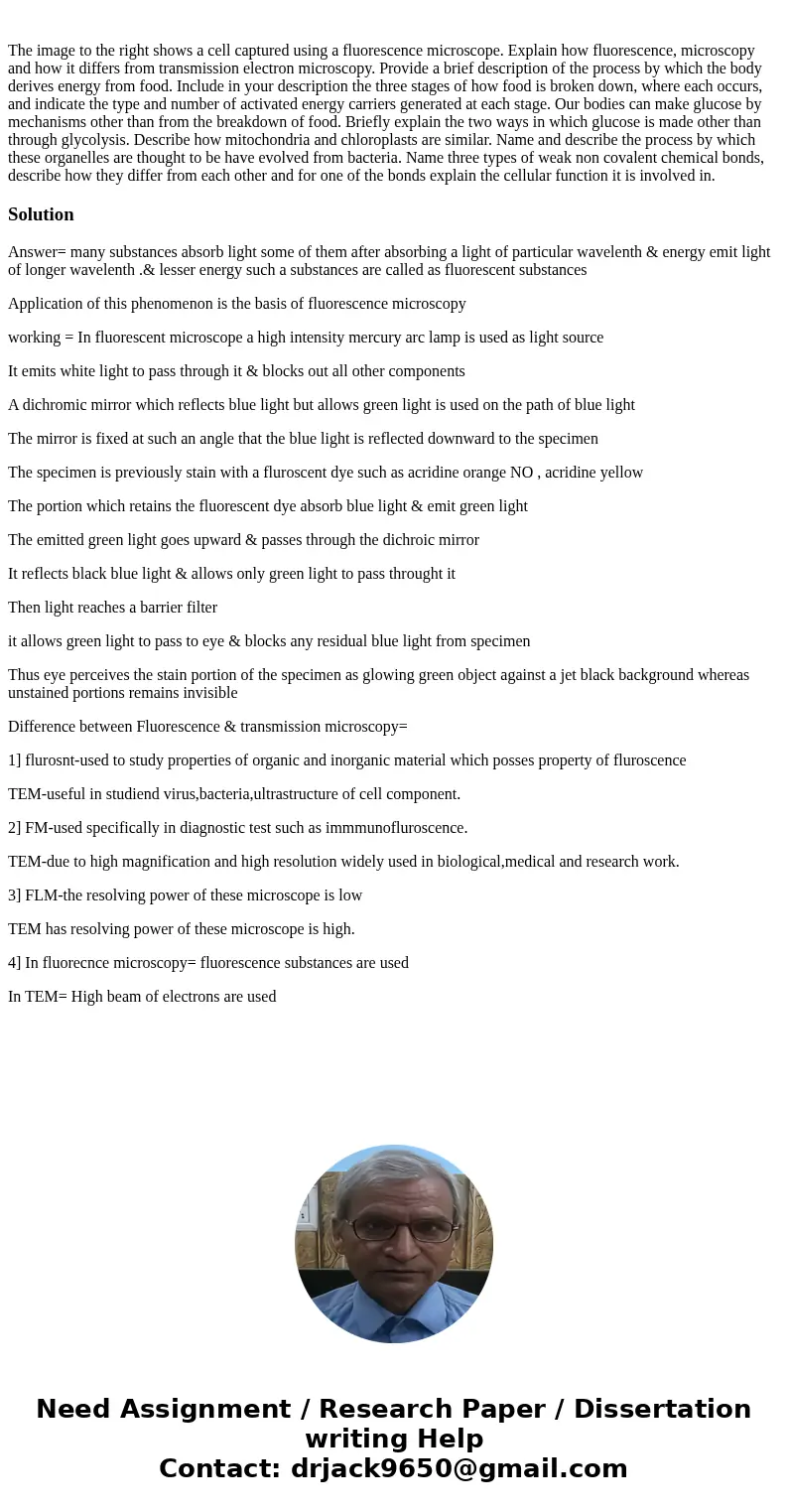The image to the right shows a cell captured using a fluores
Solution
Answer= many substances absorb light some of them after absorbing a light of particular wavelenth & energy emit light of longer wavelenth .& lesser energy such a substances are called as fluorescent substances
Application of this phenomenon is the basis of fluorescence microscopy
working = In fluorescent microscope a high intensity mercury arc lamp is used as light source
It emits white light to pass through it & blocks out all other components
A dichromic mirror which reflects blue light but allows green light is used on the path of blue light
The mirror is fixed at such an angle that the blue light is reflected downward to the specimen
The specimen is previously stain with a fluroscent dye such as acridine orange NO , acridine yellow
The portion which retains the fluorescent dye absorb blue light & emit green light
The emitted green light goes upward & passes through the dichroic mirror
It reflects black blue light & allows only green light to pass throught it
Then light reaches a barrier filter
it allows green light to pass to eye & blocks any residual blue light from specimen
Thus eye perceives the stain portion of the specimen as glowing green object against a jet black background whereas unstained portions remains invisible
Difference between Fluorescence & transmission microscopy=
1] flurosnt-used to study properties of organic and inorganic material which posses property of fluroscence
TEM-useful in studiend virus,bacteria,ultrastructure of cell component.
2] FM-used specifically in diagnostic test such as immmunofluroscence.
TEM-due to high magnification and high resolution widely used in biological,medical and research work.
3] FLM-the resolving power of these microscope is low
TEM has resolving power of these microscope is high.
4] In fluorecnce microscopy= fluorescence substances are used
In TEM= High beam of electrons are used

 Homework Sourse
Homework Sourse